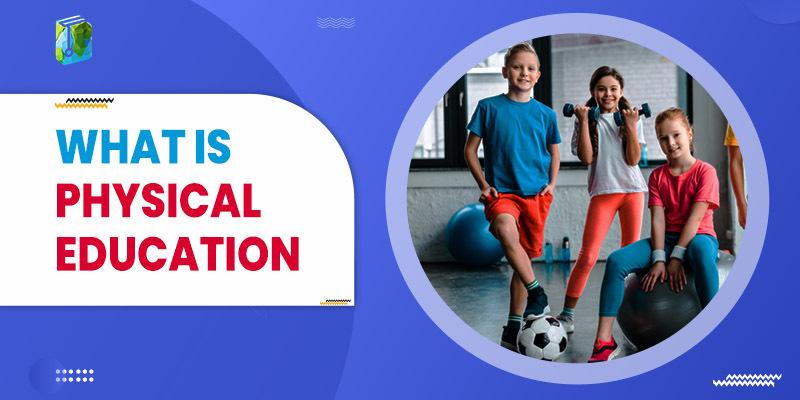Physical Education: Children, just like grown-ups, benefit from regular exercise. For most children, practice implies being genuinely dynamic during play, break, and physical training class, otherwise called P.E. Physical training adds to every kid’s all-out development and advancement. Medical advantages from standard exercise include more structured and healthy muscles and bones, expanded coordination and vitality, and diminished danger of creating interminable sicknesses, for example, type 2 diabetes.
What is Physical Education?
In simple words, Physical Education is the investigation of the body movement and getting familiar with the bones, muscles, and body to improve implementation. It makes the body solid and adaptable in a wide range of development. By working out, the body and brain become more stabilized, and one can think and react quickly and promptly. It inculcates fearlessness, and the body is less inclined to injury and sickness, thus making the body solid. To achieve this, sports and exercises are utilized.
Role of Physical Education
Physical training is a course instructed in school that centers on creating physical wellness and the ability to easily perform and appreciate physical tasks and exercises involved in the daily routine. Children also create abilities important to partake in a wide scope of exercises, such as soccer, cricket, or swimming.
Ordinary physical training classes plan for children to be genuinely and intellectually dynamic, fit, and sound and grow into strong adults. A compelling physical instruction program should incorporate connecting with exercises, prepared P.E. educators, satisfactory instructional periods, and understudy assessment.
It plans to build up a child’s physical skills and information on development and security and their capacity to utilize these to act in a wide scope of exercises related to improving a functioning and dependable way of life. It additionally builds up a child’s certainty and conventional abilities, particularly those of coordinated effort, correspondence, imagination, basic reasoning, and visualization. Together with the support of positive qualities and mentalities in P.E., these give a decent establishment to students’ long-lasting and life-long learning.
Physical Education assists students in creating physical aptitudes and confidence. For instance, traditional and center school educational programs incorporate exercises that help kids get new and improve existing abilities, such as running, jumping, tossing, and striking, appropriate to sports, such as basketball, volleyball, or football.
Why is Physical Education important?
Physical Education teaches health and wellness and encourages the desire for deep-rooted cooperation in physical movement. The curriculum allows the child to turn out to be exceptionally capable in at least one game or potentially improve their lifestyle at the minimum.
These classes encourage the medical advantages of ordinary exercise and solid nourishment decisions alongside the dangers of latency and inconsistent unhealthy routine. Students of any age may be approached to commit themselves to making a few upgrades in diet and exercise for a month or so.
They would be required to maintain a diary about how they feel during the procedure and consider how these progressions influence execution and mindset. Physical Education likewise assists children with creating social aptitudes. For example, group activities assist the children and students figure out how to regard others, be united as a team, and associate as a profitable individuals from a group.
Future of Physical Education
It was nothing unexpected to locate the computerized world at the core of the examination, which took a gander at key influences on students’ relationship with Physical Education and Physical activities in the future. The report exhibits how innovation can be utilized to modernize P.E. and school sports, and engage students to assume liability for their movement levels.
By working with schools, specialists, and the scope of accomplices, we stand a genuine possibility of accomplishing an ideal future laid out in the report – and stay away from a ‘sidelined’ age.
Youngsters benefit from a wide assortment of aptitudes, abilities, and levels of inspiration in their learning in Physical Education. They are spoken to for all purposes of the physical movement continuum. Some youngsters are normally dynamic and take an interest at a significant execution level.
They can generally create uplifting mentalities to physical movement and its significance in a sound and satisfying way of life. Therefore, all the authorities are trying to introduce Physical Education at an early stage and continue it till the graduation or post-graduation level so that a student is not just well-educated but also healthy and smart.
Conclusion
There are numerous advantages to being physically dynamic; better fixation, expanded emotional wellness, social aptitudes, lower circulatory strain, a lower danger of stoutness, etc. Physical Education shows relationship-building abilities forever; it opens the opportunities for individuals to see many diverse approaches to be dynamic in their grown-up lives.
We show physical Education to expand abilities likewise, tossing and getting, striking aptitudes, jumping, bouncing and hopping, running just as explicit game abilities, for example, guarded abilities, strategies, and hostile aptitudes. We spread intrusion sports (football, netball, hockey) just as open-air sports like cycling, rowing, rock climbing, or snag courses. These aptitudes allow individuals to see happiness in development and stay solid and dynamic, ready to pick any action or game they need for the remainder of their lives.

